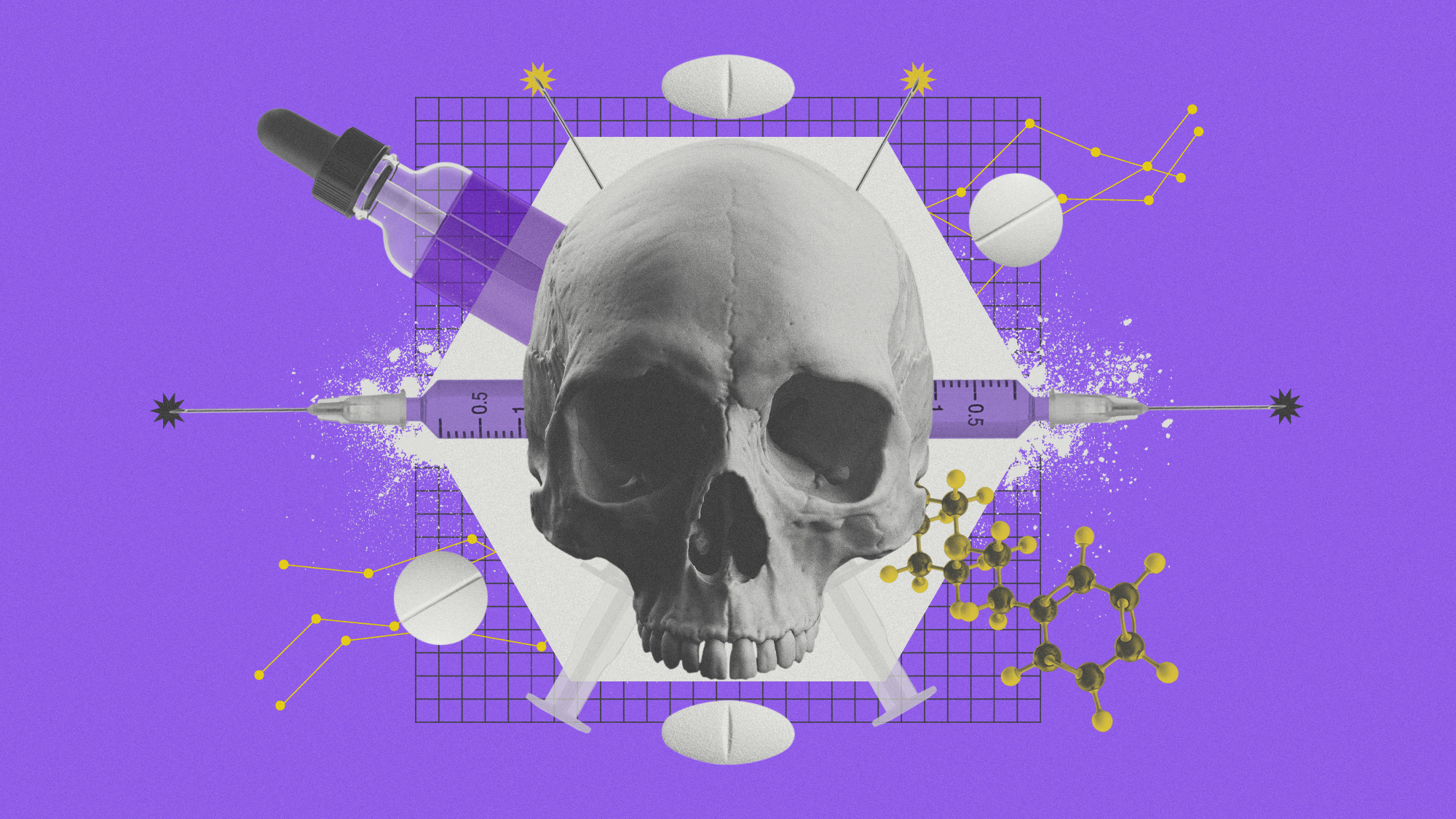How polysubstance abuse is worsening the American opioid crisis
Studies are showing that more Americans are struggling with dependency on multiple substances.


America's addiction crisis is being ushered into a dangerous new era by rising levels of polysubstance abuse, as more people become addicted to deadly combinations of synthetic opioids and stimulants. The alarming trend is causing concern among addiction specialists and medical professionals, who say the rise of polysubstance abuse is making it harder to treat opioid addiction and taking the crisis to a new, more perilous level.
What is polysubstance abuse?
Polysubstance abuse is described by the U.S. Centers for Disease Control and Prevention (CDC) as the "use of more than one drug." This includes when multiple drugs are taken at the same time or "within a short time period," the CDC explained, "either intentionally or unintentionally." When done intentionally, polysubstance use typically occurs when someone "takes a drug to increase or decrease the effects of a different drug or wants to experience the effects of the combination," the CDC added. Unintentional use happens when someone unknowingly takes drugs that were cut or mixed with other drugs. Either way, the consequences can be deadly because the effects from a combination of drugs "may be stronger and more unpredictable than one drug alone."
Mixing substances is never safe, but combining drugs from opposite drug classes can be especially deadly. Contrary to what some substance users believe, mixing stimulants and depressants "doesn’t balance or cancel them out," the CDC said. "In fact, the results of combining drugs are unpredictable, often modifying or even masking the effects of one or both drugs." This could create the illusion that "the drugs are not affecting you, making it easier to overdose," the agency added.
How are stimulants further complicating America's opioid crisis?
The country is in "a new and perilous period in its battle against illicit drugs," Jan Hoffman wrote for The New York Times. The scourge is "not only opioids" like fentanyl, but the rising tide of polysubstance abuse, Hoffman noted. Multiple recent studies of opioid addicts have shown that between 70 and 80% also take other substances. This is "stymieing treatment efforts and confounding state, local and federal policies," Hoffman explained.
"It’s no longer an opioid epidemic," Dr. Cara Poland, associate professor at Michigan State University's College of Human Medicine, told the Times. "This is an addiction crisis."
Non-opioids being taken alongside drugs like fentanyl and heroin include animal tranquilizer xylazine, known as tranq dope, prescription pills like Valium and Klonopin and illicit stimulants like cocaine and meth. None of these drugs are safe to mix with opioids, but the "incursion of meth has been particularly problematic," Hoffman reported. Unlike opiates, no medicines are approved to treat meth addiction, which can "undercut the effectiveness of opioid addiction therapies."
"Treating someone for opiates is relatively easy," Dr. Paul Trowbridge, an addiction medicine specialist, told the Times, but meth is a "monster." There are federally approved medications like buprenorphine and methadone that have been shown to subdue opioid cravings, as well as Narcan, the over-the-counter nasal spray for reversing opioid overdoses. While there aren't any similar treatments approved for stimulant abuse, the Food and Drug Administration has issued draft guidelines for developing therapies for stimulant-use disorders. For example, some doctors have prescribed Adderall to help patients cut back on using meth, per the Times, but "that avenue is narrowing because of the drug’s nationwide shortage," Hoffman said.
Combining deadly stimulants like cocaine and meth with "highly potent synthetic opioids" like fentanyl has become "a fast-growing driver of fatal overdoses in the U.S.," NPR reported. Deaths involving fentanyl and stimulants increased from 0.6% of total overdose deaths in 2010 to 32% as of 2021, per a study recently published in the scientific journal Addiction.
The use of fentanyl alongside stimulants is "rapidly becoming the dominant force in the U.S. overdose crisis," Joseph Friedman, the study's lead author and a researcher at UCLA's David Geffen School of Medicine, told NPR. The synthetic opioid has "ushered in a polysubstance overdose crisis." The authors called the recent spike in these overdoses the fourth wave of the US opioid crisis. Prescription opioids preceded this wave in the early 2000s, heroin in the early 2010s and "fentanyl circa 2013," NPR summarized.
Theara Coleman has worked as a staff writer at The Week since September 2022. She frequently writes about technology, education, literature and general news. She was previously a contributing writer and assistant editor at Honeysuckle Magazine, where she covered racial politics and cannabis industry news.
-
 Doctors sound the alarm about insurance company ‘downcoding’
Doctors sound the alarm about insurance company ‘downcoding’The Explainer ‘It’s blatantly disrespectful,’ one doctor said
-
 Can TrumpRx really lower drug prices?
Can TrumpRx really lower drug prices?Today’s Big Question Pfizer’s deal with Trump sent drugmaker stocks higher
-
 Kissing bug disease has a growing presence in the US
Kissing bug disease has a growing presence in the USThe explainer The disease has yielded a steady stream of cases in the last 10 years
-
 Private equity firms might be causing more deaths in hospital ERs
Private equity firms might be causing more deaths in hospital ERsThe Explainer Deaths in ERs purchased by private equity firms rose 13%
-
 The UK’s opioid crisis: why the stats don’t add up
The UK’s opioid crisis: why the stats don’t add upThe Explainer A new report has revealed that the UK’s total of opioid-related deaths could be much greater than official figures show
-
 Sloth fever shows no signs of slowing down
Sloth fever shows no signs of slowing downThe explainer The vector-borne illness is expanding its range
-
 Why the FDA wants to restrict kratom-related products
Why the FDA wants to restrict kratom-related productsIn the Spotlight The compound is currently sold across the United States
-
 Not just a number: how aging rates vary by country
Not just a number: how aging rates vary by countryThe explainer Inequality is a key factor



